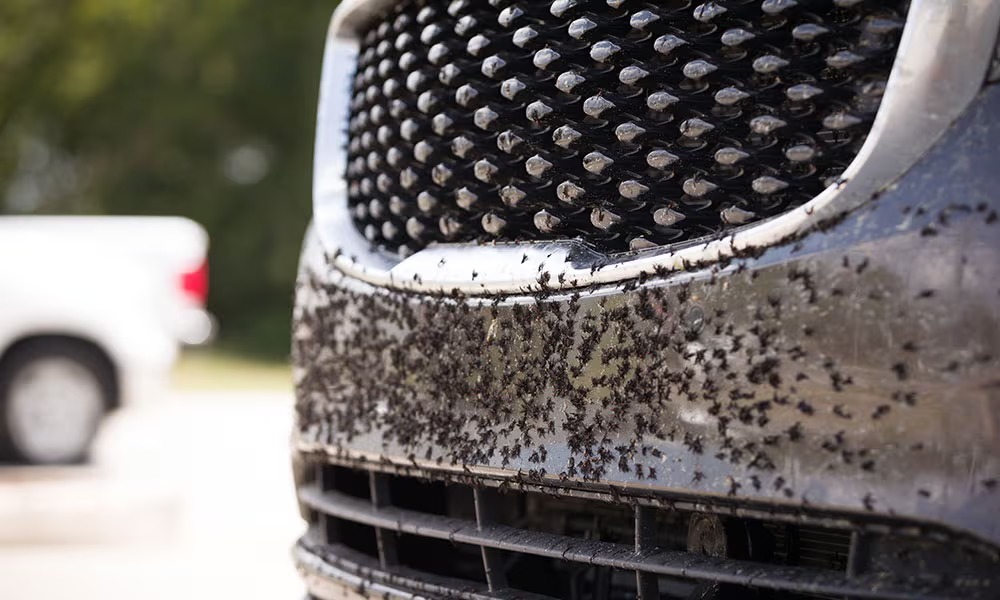 Details
Details
You’ve just wrapped up a road trip or come home from work and… there they are: bugs splattered all over the front of your car—especially on the bumper, hood, and windshield. Not only do they ruin the look of your vehicle, but if left there too long, they can actually damage your paint.
In this post, we’ll break down why bugs stick so easily, what kind of damage they can cause, and the best way to get rid of them quickly and safely—without harming your car’s clear coat.
————————————————————————————————————————
While driving, especially on highways or through rural areas, bugs inevitably collide with your car. The heat from the engine and paint causes their remains to almost “cook” onto the surface, making them even harder to remove.
To make matters worse, many insects contain acidic compounds that can eat into your paint if not cleaned off promptly. And if your car sits in the sun or goes days without being washed? That damage only gets worse.
————————————————————————————————————————
Leaving bug splatter on your car too long can lead to:
Bottom line: the sooner you act, the better.
————————————————————————————————————————
The safest and most effective way to clean off bugs is with a multi-purpose automotive cleaner—like Impact from Vonixx or Citrus from Evox. These products are specially formulated to break down bug remains without damaging your paint, plastic trim, or other sensitive surfaces.
This method is safe for all parts of the car—including headlights, grilles, chrome, and paint.
————————————————————————————————————————
💡 Pro Tip: Add a Layer of Protection After Cleaning
Once the bugs are gone, apply a quick wax or sealant (like Glazox) to create a slick, protective layer. This not only enhances shine but also makes it harder for bugs to stick the next time around—saving you time and effort.
————————————————————————————————————————
Bug splatter isn’t just gross—it’s harmful. But with the right products and a simple routine, you can remove those pesky marks in minutes and keep your car looking like new.
The trick? Don’t wait. Tackle the mess early, use the right cleaner, and finish with protection. Your paint (and your future self) will thank you.